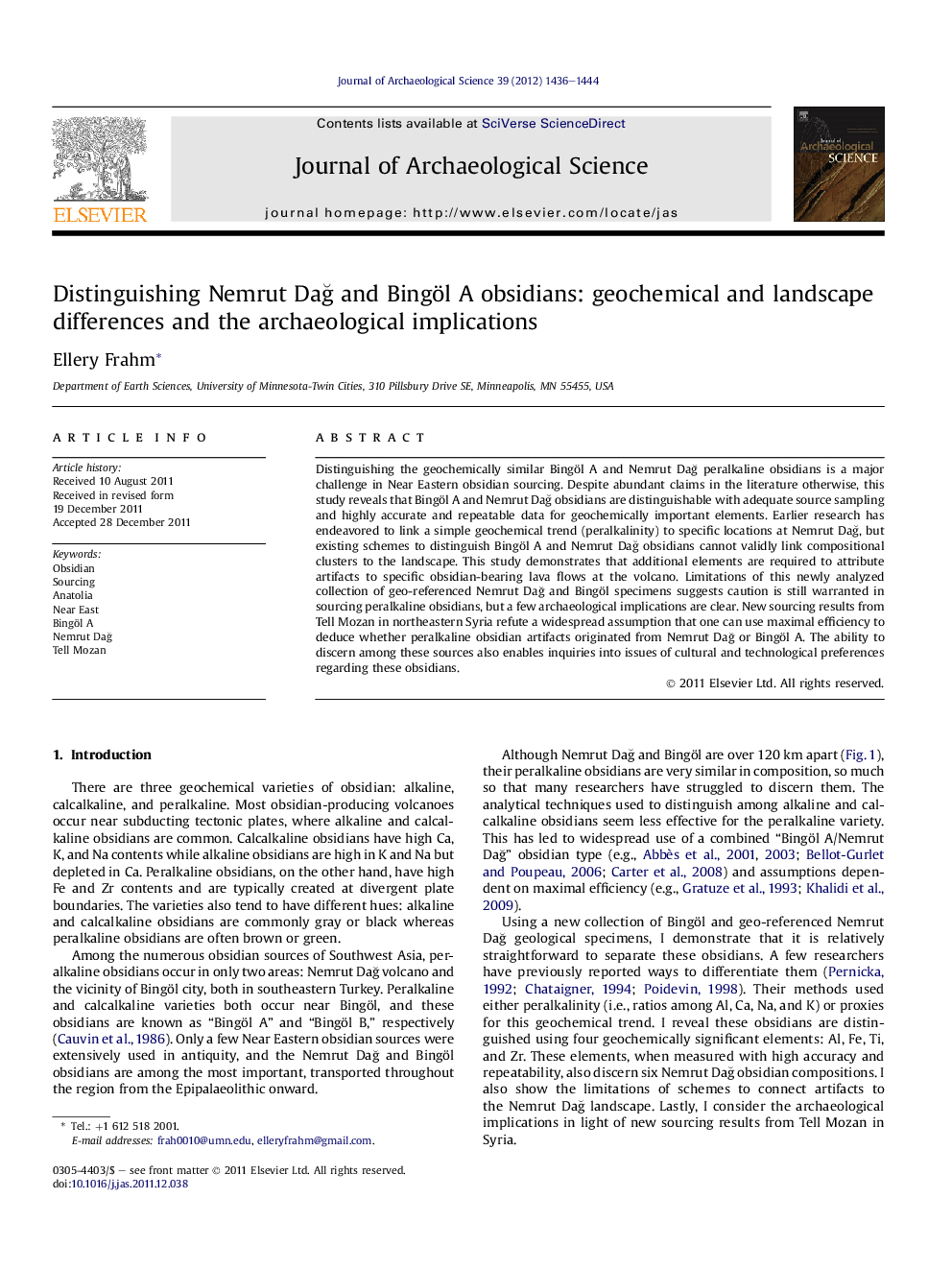| Article ID | Journal | Published Year | Pages | File Type |
|---|---|---|---|---|
| 1035762 | Journal of Archaeological Science | 2012 | 9 Pages |
Distinguishing the geochemically similar Bingöl A and Nemrut Dağ peralkaline obsidians is a major challenge in Near Eastern obsidian sourcing. Despite abundant claims in the literature otherwise, this study reveals that Bingöl A and Nemrut Dağ obsidians are distinguishable with adequate source sampling and highly accurate and repeatable data for geochemically important elements. Earlier research has endeavored to link a simple geochemical trend (peralkalinity) to specific locations at Nemrut Dağ, but existing schemes to distinguish Bingöl A and Nemrut Dağ obsidians cannot validly link compositional clusters to the landscape. This study demonstrates that additional elements are required to attribute artifacts to specific obsidian-bearing lava flows at the volcano. Limitations of this newly analyzed collection of geo-referenced Nemrut Dağ and Bingöl specimens suggests caution is still warranted in sourcing peralkaline obsidians, but a few archaeological implications are clear. New sourcing results from Tell Mozan in northeastern Syria refute a widespread assumption that one can use maximal efficiency to deduce whether peralkaline obsidian artifacts originated from Nemrut Dağ or Bingöl A. The ability to discern among these sources also enables inquiries into issues of cultural and technological preferences regarding these obsidians.
► Distinguishing Bingöl A and Nemrut Dağ obsidians is often claimed not possible. ► This study shows Nemrut Dağ and Bingöl A obsidians can be reliably differentiated. ► Moreover it shows there are multiple distinct chemical signatures for both areas. ► Using these techniques, artifacts from Tell Mozan were sourced to both sources. ► The results debunk a widespread assumption in sourcing about maximal efficiency.
